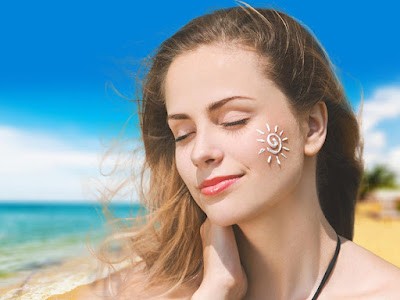Scientists have concluded that the damage that UV rays do to the skin does not stop once you stay out of the sun.
Researchers said that the damage of ultraviolet rays emitted from the sun or from devices that give the skin a bronze color, appears in the three or four hours following exposure to these rays, due to chemical changes that affect the “melanin” substance in the skin.
It is reported that melanoma tumors are linked to exposure to ultraviolet rays, and are responsible for the majority of skin cancer deaths.
The role of melanin, which determines the color of the skin, eyes and hair, in promoting damage to DNA came as a surprise to the researchers because it was previously thought that this substance played a role in protecting against damage by absorbing most of the energy of UV rays before it penetrated the skin.
However, Douglas Brach, professor of dermatology and radiotherapy at Yale University School of Medicine, whose study was published in the journal Science, said: "The unusual chemical properties of melanin that make it absorb ultraviolet rays are the same ones that make it susceptible to chemical reactions that have the same effects. results caused by ultraviolet rays."
Exposure to ultraviolet rays can cause DNA damage that leads to a cancerous mutation in melanin-producing cells, which are known as melanocytes.
In this context, Sanjay Premi, a researcher at the Yale University School of Medicine, said: "People need to know the chemical changes that occur in the skin after exposure to UV rays, so they can take appropriate measures when they go on a cruise or sit in the sun."
He continued, "We hope to find ingredients that stop these chemical changes, to add them to sunscreens. But at the moment I advise people to enjoy the sun, but without exposure to it directly between 10:00 in the morning and 14:00 in the afternoon, and they should wear hats to protect them from the sun. Sunscreens are also good if they protect against both UVB and UVA rays.
Researchers said that the damage of ultraviolet rays emitted from the sun or from devices that give the skin a bronze color, appears in the three or four hours following exposure to these rays, due to chemical changes that affect the “melanin” substance in the skin.
It is reported that melanoma tumors are linked to exposure to ultraviolet rays, and are responsible for the majority of skin cancer deaths.
The role of melanin, which determines the color of the skin, eyes and hair, in promoting damage to DNA came as a surprise to the researchers because it was previously thought that this substance played a role in protecting against damage by absorbing most of the energy of UV rays before it penetrated the skin.
However, Douglas Brach, professor of dermatology and radiotherapy at Yale University School of Medicine, whose study was published in the journal Science, said: "The unusual chemical properties of melanin that make it absorb ultraviolet rays are the same ones that make it susceptible to chemical reactions that have the same effects. results caused by ultraviolet rays."
Exposure to ultraviolet rays can cause DNA damage that leads to a cancerous mutation in melanin-producing cells, which are known as melanocytes.
In this context, Sanjay Premi, a researcher at the Yale University School of Medicine, said: "People need to know the chemical changes that occur in the skin after exposure to UV rays, so they can take appropriate measures when they go on a cruise or sit in the sun."
He continued, "We hope to find ingredients that stop these chemical changes, to add them to sunscreens. But at the moment I advise people to enjoy the sun, but without exposure to it directly between 10:00 in the morning and 14:00 in the afternoon, and they should wear hats to protect them from the sun. Sunscreens are also good if they protect against both UVB and UVA rays.
